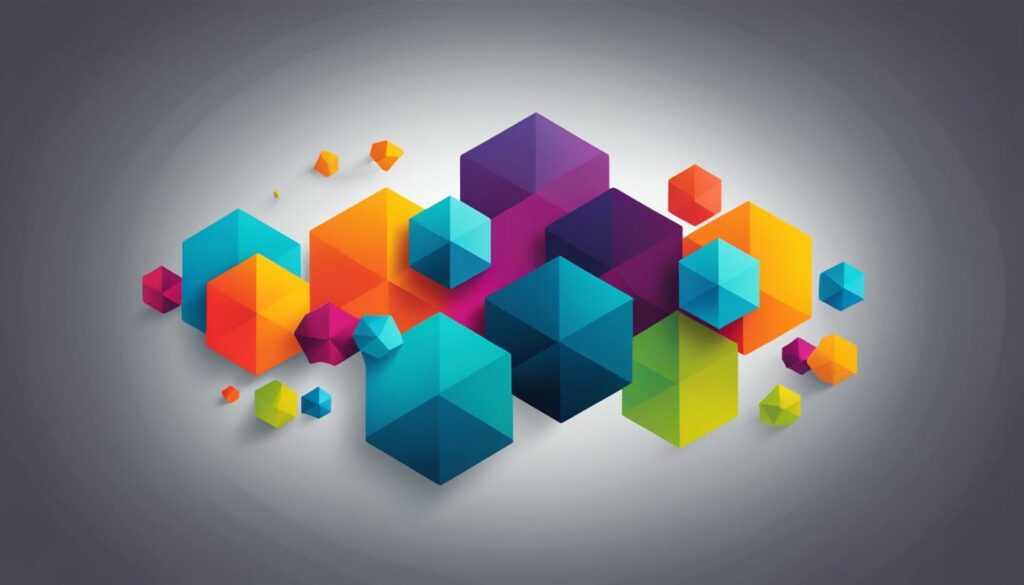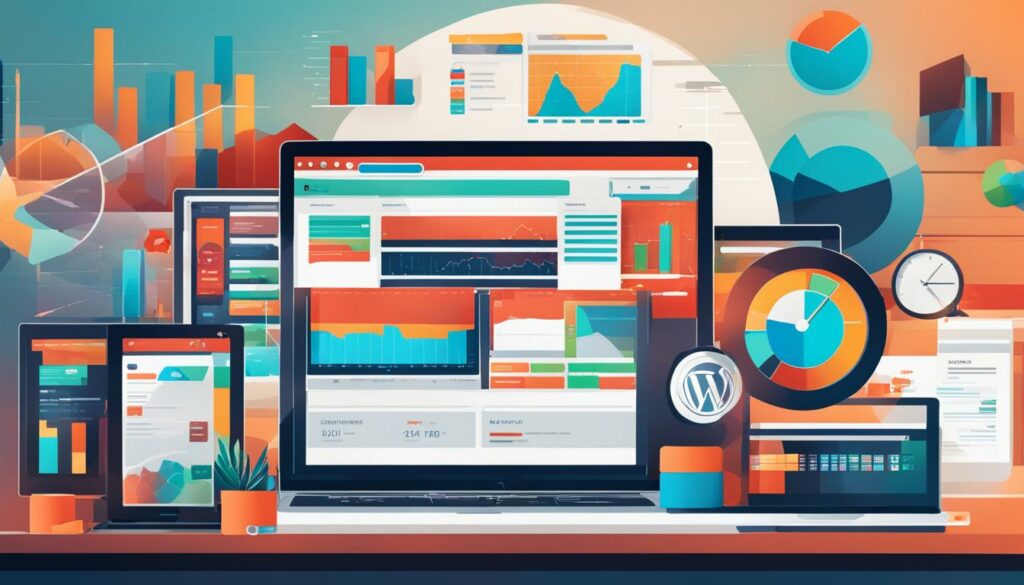Welcome to the world of CSS3, the latest version of Cascading Style Sheets that is revolutionizing the way websites are styled and designed. With its advancements in animations, transitions, and visual effects, CSS3 offers a plethora of exciting features that will elevate the look and feel of your website.
From advanced animations and transitions to multiple backgrounds and gradients, CSS3 empowers web designers to create visually stunning and dynamic web pages. With CSS3, you can add eye-catching elements like rounded corners, opacity control, font flexibility, and transformative effects to give your website a modern and polished look.
But it’s not just about aesthetics. CSS3 also offers improved performance, cross-browser compatibility, and cost-effectiveness. By reducing the need for additional images and code, CSS3 ensures faster loading times and a seamless experience across devices.
Implementing CSS3 in your website may seem intimidating at first, but don’t worry, we’ve got you covered. In this article, we’ll explore the key features, best practices, and implementation of CSS3, so you can take your website to the next level.
—
Key Takeaways:
- CSS3 offers a range of advancements in styling and animations for modern websites.
- Features like advanced animations, multiple backgrounds, and font flexibility enhance the visual appeal of websites.
- CSS3 improves performance, cross-browser compatibility, and loading times.
- Implementing CSS3 requires understanding the key features and best practices.
- BoostedHost’s WordPress Hosting provides optimal performance for CSS3 implementation.
Ready to unleash the power of CSS3 on your website? Sign up for BoostedHost’s WordPress Hosting now, and take your web design to new heights of creativity and functionality.
How do CSS animations work?
CSS animations are a powerful way to bring your web pages to life. With CSS, you can animate changes in the style properties of HTML elements, creating dynamic and engaging content. But how exactly do CSS animations work?
At the core of CSS animations are keyframes. These keyframes define the styles at the start and end of the animation, allowing you to specify how the element should transform over time. You can define different keyframes for different stages of the animation, giving you precise control over the animation’s appearance.
To associate the animation with an HTML element, you need to use a CSS rule. This rule specifies the animation-name property, which binds the animation to the HTML element. You can also add additional declarations to customize the animation, such as speed and delay.
One of the great advantages of CSS animations is their lightweight nature. Unlike other animation techniques that require external scripts or media files, CSS animations rely solely on CSS code. This means that they load quickly, resulting in a seamless and smooth experience for your users.
“CSS animations are a fantastic way to add interactivity and visual interest to your website. With just a few lines of code, you can create animations that capture your audience’s attention and make your website stand out.”
So, whether you want to create a subtle fade-in effect or a complex motion path, CSS animations offer the flexibility and creativity you need. They are compatible with all modern browsers and are a cost-effective solution for adding animations to your website.
Now that you understand the basics of how CSS animations work, let’s explore some examples of CSS animations in action in the next section.
CSS Animation Examples
Looking to enhance your website with eye-catching animations? CSS animations provide a wide range of possibilities to add dynamic and visually appealing effects. Check out these CSS animation examples that showcase the creative potential of CSS animations:
1. Mouse Hover Transition Effect
Add a touch of interactivity to your website by incorporating mouse hover transition effects. These effects transform elements when users hover over them, creating an engaging and interactive experience.
2. Loading Spinners
Keep your users entertained while your website loads with loading spinners. These animated icons indicate that the page is being loaded, providing visual feedback and reducing user frustration.
3. Scrolling Text Animation
Make your text stand out with scrolling text animations. Whether it’s a catchy headline or important information, animating your text as it scrolls can grab attention and add visual interest to your website.
4. Animated Submit Button
Add a touch of excitement to your forms by animating the submit button. Create dynamic and interactive buttons that respond to user actions, enhancing the overall user experience.
5. Hover-Responsive Logo
Make your logo come alive with a hover-responsive effect. When users hover over your logo, it can transform or animate, adding a touch of personality to your brand.
6. Opening Envelope
Create anticipation and excitement by animating an opening envelope. Perfect for showcasing special offers, announcements, or exclusive content.
7. Hot Coffee
Bring warmth to your website with a steaming cup of hot coffee. This animation can add a cozy and inviting touch to coffee shop websites or any platform that wants to evoke a warm and welcoming atmosphere.
8. Coffee Machine
Animate a coffee machine brewing a fresh cup of joe. This animation can be a playful addition to coffee-related websites or blog posts.
9. Button Wiggle
Add some fun and playfulness to your buttons with a wiggle animation. It’s a small detail that can make a big impact on the overall user experience.
10. Pacman
Bring back the nostalgia of the classic game with a Pacman animation. It’s a great way to add a fun and retro touch to your website.
11. File Drawers
Animate file drawers sliding open and closed for an organized and dynamic design. This animation can be used for file management systems, cloud storage platforms, or any website that deals with digital assets.
12. Color Fan
Add a burst of colors with an animated color fan. This visually pleasing animation can be used to showcase a wide range of color options or draw attention to products or services.
13. 3D Toggle Switch
Level up your user interface with an animated 3D toggle switch. This interactive element adds functionality and style to your website.
14. Submarine
Create an underwater experience with an animated submarine. This playful animation can be used for marine-themed websites or to add an unexpected touch to your design.
15. Animated Title Text on Hover
Add flair to your titles by animating them on hover. Play with various effects, such as scaling, rotating, or fading, to create an eye-catching and interactive element.
16. Floating Image
Gently animate an image floating across the screen. This subtle animation can add a touch of whimsy or elegance to your website.
17. Astronaut
Launch your website into space with an animated astronaut. Perfect for astronomy-related websites or to add a sense of exploration and adventure to your design.
18. Minimal Cat
Introduce a cute and minimalistic cat animation into your website. This simple but charming animation can be a delightful addition to pet-themed websites or blogs.
19. Growing/Shrinking Bars
Bring visual interest to your design with growing and shrinking bars. This animation can be used to indicate progress, levels, or any dynamic data displays.
20. Laser Tag
Add an electrifying touch to your website with an animated laser tag effect. This attention-grabbing animation is sure to leave a lasting impression on your visitors.
These CSS animation examples are just the tip of the iceberg when it comes to the possibilities that CSS animations offer. CodePen is a popular online platform where you can find and create CSS animation snippets. Explore CodePen and unleash your creativity to bring your website to life!
Remember, BoostedHost offers WordPress Hosting for optimal performance. Sign up now to take your website to the next level! Visit BoostedHost for more information.
What Are CSS Animations and Why Are They Crucial?
CSS animations are a vital component of modern web design, offering numerous benefits that enhance user experience, performance, and customization. These animations play a crucial role in showcasing the technical prowess and attention to detail of a website, providing a visually appealing and engaging user interface.
One of the main advantages of CSS animations is their performance efficiency. With CSS animations, websites can achieve seamless transitions and movements without affecting loading times or performance. This efficiency contributes to an enhanced user experience, ensuring smooth and delightful interactions on the site. Moreover, CSS animations are compatible with various browsers, facilitating cross-browser compatibility and allowing websites to reach a wider audience.
CSS animations also offer control and customization options, enabling web designers to create unique and personalized effects that align with their brand and aesthetic preferences. From subtle fades to complex transformations, the possibilities are endless. These animations create a sense of modernity and aesthetic appeal, captivating users and leaving a lasting impression.
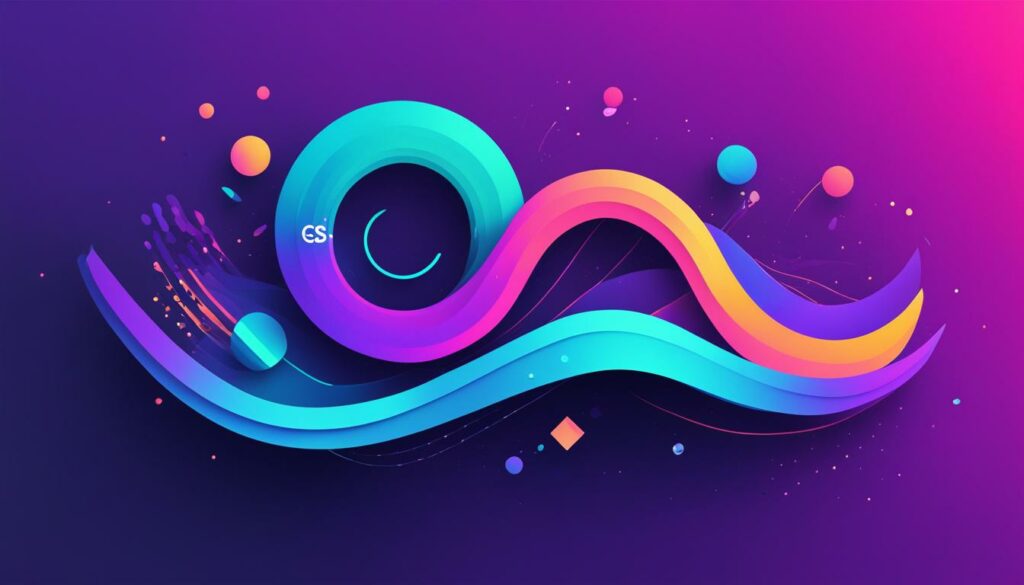
Furthermore, CSS animations are cost-effective as they eliminate the need for external plugins or software. By utilizing CSS animations, web designers can deliver stunning visual effects without relying on additional resources, ultimately reducing development costs.
Another significant advantage of CSS animations is their SEO friendliness. These animations contribute to improved website performance and loading times, factors that are highly valued by search engines. By boosting website speed and efficiency, CSS animations can positively impact search engine rankings, increasing visibility and organic traffic.
In summary, CSS animations play a crucial role in modern web design, elevating user experience, performance, and customization. With their importance in enhancing interactivity, capturing attention, and creating memorable experiences, CSS animations have become a fundamental skill for every web designer.
“The Basics of CSS Animations”
To create dynamic and engaging animations for HTML elements, CSS offers a powerful feature known as CSS animations. These animations are defined using the CSS @keyframes rule and various animation properties. Let’s take a closer look at how CSS animations work and their role in enhancing user experience.
The CSS @keyframes rule allows you to define the steps or keyframes of an animation by specifying the styles at various points during the animation. Each keyframe represents a specific state of the animation, enabling you to create smooth transitions and continuous movement.
Animation properties, such as animation-name, animation-duration, animation-timing-function, and animation-delay, control the behavior and timing of the animation. The animation-name property associates the animation with the HTML element, while the animation-duration determines how long the animation lasts. The animation-timing-function adjusts the speed and easing of the animation, providing options like linear, ease-in, ease-out, and ease-in-out. Additionally, the animation-delay property allows you to specify a delay before the animation starts.
Unlike CSS transitions, which are used for single state changes, CSS animations enable you to create complex animations with multiple state changes and continuous movement. This versatility allows you to bring your designs to life and create compelling storytelling elements on your website.
In addition to controlling the animation itself, CSS also provides the animation-fill-mode property to define how the element should appear before and after the animation. This property offers options like “none,” “forwards,” “backwards,” and “both,” allowing you to control the element’s appearance during idle states.
If you want the animation to repeat a specific number of times, you can use the animation-iteration-count property. This property allows you to define the number of times the animation should repeat, or use “infinite” to repeat the animation indefinitely.
CSS animations are not only about making elements move; they play a vital role in creating engaging user experiences. These animations can guide the user’s attention, emphasize calls to action, and provide interactivity that makes interactions more intuitive and satisfying.
To ensure compatibility and a seamless experience for users, CSS animations are widely supported by modern browsers. This compatibility allows you to implement animations without worrying about compatibility issues across different devices and platforms.
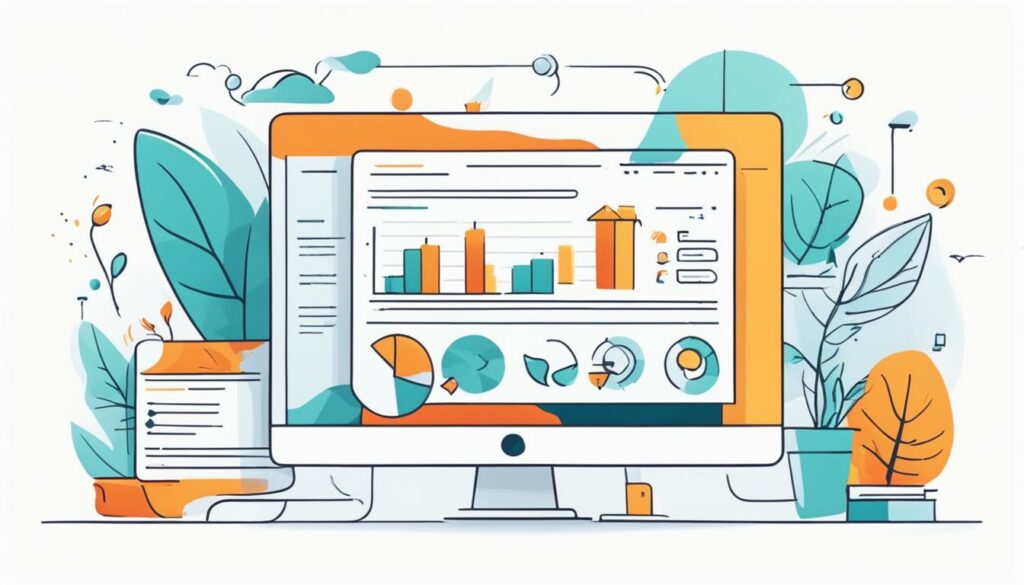
Implementing CSS animations effectively can significantly enhance the user experience and storytelling capabilities of your website. By creatively utilizing CSS @keyframes and animation properties, you can create visually stunning and interactive content that captivates your audience.
Now that you understand the basics of CSS animations, it’s time to explore the advantages of using CSS animations and how they can benefit your web design efforts. Let’s dive into the next section to learn more.
The Advantages of Using CSS for Animations
CSS animations offer a multitude of advantages over other animation techniques, making them a popular choice among web designers. Let’s explore the key benefits of using CSS animations:
1. Performance Efficiency
CSS animations leverage the power of the GPU, ensuring smooth animations without compromising the loading time or overall performance of your website. This allows you to create engaging animations that enhance the user experience without sacrificing speed or efficiency.
2. Cross-Browser Compatibility
CSS animations are compatible with modern browsers and devices, guaranteeing a consistent experience for all users. Whether your audience is browsing on desktop or mobile, they will enjoy the same visually appealing animations across different platforms.
3. Enhanced User Experience and Engagement
Animations bring life and interactivity to your website, capturing and maintaining the attention of your visitors. With CSS animations, you can create captivating visual effects that engage users, improve navigation, and guide them through your content seamlessly.
4. Control and Customization
CSS animations offer granular control over every aspect of your animations. You can customize the timing, duration, easing, and other properties to match your brand’s aesthetic preferences. This level of control allows you to create unique and memorable animations that align with your website’s overall design.
5. Cost-Effectiveness
Unlike other animation techniques that may require additional investments in software or plugins, CSS animations are cost-effective. With CSS alone, you can create captivating animations without the need for any external resources. This makes CSS animations a budget-friendly choice for web designers.
6. SEO Friendly
CSS animations contribute to better search engine optimization by improving website speed and performance. With faster loading times, your website is more likely to rank higher in search engine results. Additionally, CSS animations reduce the need for extra code, resulting in cleaner and more SEO-friendly web pages.
To optimize your website’s performance and unlock the full potential of CSS animations, we recommend BoostedHost’s WordPress Hosting. Sign up now through this link: www.boostedhost.com/wordpress-hosting.
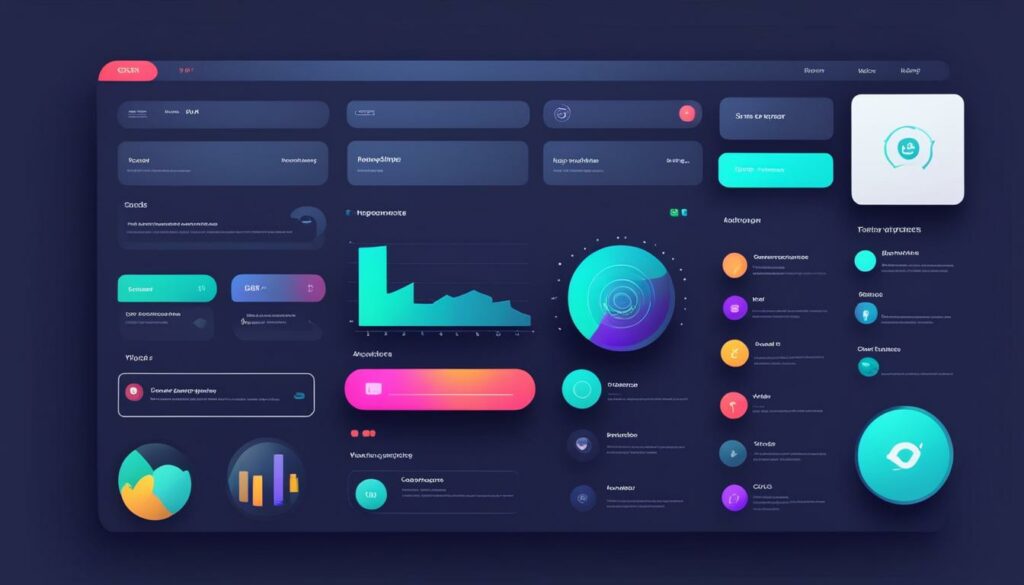
With the advantages of performance efficiency, cross-browser compatibility, enhanced user experience and engagement, control and customization, cost-effectiveness, and SEO friendliness, CSS animations are undoubtedly a valuable tool for creating dynamic and visually appealing websites.
Crafting Custom Animations with CSS
Creating custom animations with CSS allows you to bring your creative ideas to life and enhance the user experience on your website. By understanding the basics of CSS animations and utilizing the @keyframes rule and animation properties, you can design unique and brand-aligned animations that captivate your audience.
To start crafting your custom animations, begin by sketching out your animation ideas. Visualize how you want your elements to move and interact on the screen, keeping in mind the overall theme and purpose of your website.
Once you have a clear animation idea, you can start writing the @keyframes rule. This rule allows you to specify the animation steps and styles that will bring your animation to life. By defining keyframes at various points during the animation, you can control the element’s appearance and position throughout the animation timeline.
After writing the @keyframes rule, you can apply the animation to the desired elements on your website. Use the animation properties, such as animation-name, animation-duration, animation-timing-function, and animation-delay, to control how the animation behaves and interacts with other elements.
Experimenting with timing and easing is crucial to achieve the desired effects for your custom animations. Timing determines the duration of the animation, while easing defines the acceleration of the animation at different points. By adjusting these parameters, you can create smooth and visually appealing animations.
Additionally, adding interaction and responsiveness to your animations can make them more dynamic and engaging. Consider incorporating user-triggered actions, such as hover effects or click animations, to make the animations feel interactive and responsive to user input.
By utilizing the capabilities of CSS, you can create custom animations that enhance your website’s visual appeal and provide a memorable user experience. Let your creativity run wild and experiment with different animation designs, timing, and easing options to achieve the desired effects. The possibilities are endless when it comes to crafting custom animations with CSS.

Example of a Custom Animation with CSS:
| Animation | Description |
|---|---|
| Fade In | A gradual transition from transparency to full visibility of an element. This animation is commonly used to fade in elements when they are loaded or become visible on the screen. |
| Bounce | An animation that simulates a bouncing effect on an element, creating a playful and dynamic appearance. This animation is often used to draw attention to specific elements or to add a whimsical touch to the design. |
| Slide In | An animation that moves an element into view from the side of the screen. This animation can be used to reveal hidden content or create a sense of movement and interactivity on the website. |
| Rotate | An animation that rotates an element around its center or a specific point on the screen. This animation can be used to create a spinning or flipping effect, adding a unique visual element to the design. |
| Pulse | An animation that creates a pulsating effect on an element, making it expand and contract in size. This animation can be used to draw attention to specific elements or to add a sense of rhythm and energy to the design. |
What is CSS3?
Aesthetically appealing websites with well-designed elements are a hallmark of successful web design. CSS3, the latest version of Cascading Style Sheets, is a powerful tool that enables web designers to achieve stunning visual effects and enhance the overall appeal of web pages. With CSS3, you can style and design elements on your website in a way that was previously only possible through complex HTML hacks or editing software like Photoshop. This latest version of CSS introduces a wide range of features and improvements, revolutionizing the way web designers approach their craft.
CSS3 offers a host of features that contribute to the aesthetic appeal of web pages. These features include improved styling elements, such as gradients, shadows, and rounded corners, helping you create visually captivating designs. With CSS3, you can reduce the need for additional code and images on your website, resulting in faster loading times and improved performance. This efficiency not only makes your website more accessible but also provides a seamless user experience.
One of the major advantages of CSS3 is its compatibility across different browsers, ensuring that your website looks consistent on various platforms. By leveraging CSS3, you can reduce the compatibility issues that often arise in web design, saving you both time and resources. Additionally, CSS3 enables you to create responsive and well-structured websites, allowing your content to adapt to different devices and screen sizes effortlessly.
By harnessing the power of CSS3, you can unlock a world of possibilities for your web designs. Whether you’re looking to revamp your website’s aesthetic appeal, improve loading times, or enhance the user experience, CSS3 provides the tools you need. It’s a valuable asset that empowers web designers to create visually stunning, efficient, and responsive websites.
Key Features of CSS3:
- Improved styling elements like gradients, shadows, and rounded corners
- Reduced code and images, resulting in faster loading times
- Compatibility across different browsers and devices
- Responsive and well-structured websites
10 Top CSS3 Features You Must Know
If you’re a web designer, it’s important to stay up to date with the latest CSS3 features. These features can greatly enhance your designs and take your websites to the next level. Here are 10 CSS3 features that you must know:
1. Advanced Animations and Transitions
CSS3 provides powerful tools for creating smooth and eye-catching animations and transitions on your web pages. From simple fades to complex movement effects, CSS3 allows you to bring your designs to life.
2. Multiple Backgrounds and Gradients
With CSS3, you can easily add multiple backgrounds and gradients to elements on your website. This allows you to create unique and visually stunning designs without the need for complex image editing.
3. Multiple Column Layouts
CSS3 allows you to create multi-column layouts for your content, making it easier to organize and present information on your website. This can be particularly useful for news articles, blog posts, or other text-heavy pages.
4. Opacity
With CSS3, you can easily control the opacity of elements on your web pages. This can be used to create transparent overlays, fade in and out effects, or add a touch of elegance to your designs.
5. Rounded Corners
CSS3 makes it simple to create rounded corners on elements, giving your designs a modern and polished look. No more relying on images or complex hacks to achieve this effect.
6. Selectors
CSS3 introduces new selectors that allow you to target specific elements or groups of elements with ease. This gives you more control over the styling of your website and makes your CSS more efficient.
7. Font Flexibility
With CSS3, you have more options for styling fonts on your web pages. You can easily adjust font size, weight, spacing, and more, making it easier to create unique and appealing typography.
8. Word Wrapping
Have long words or URLs that break your layout? CSS3 provides a solution with word wrapping. You can control how long words are displayed, ensuring that your content looks great on any screen size.
9. Transforming Elements
CSS3 allows you to transform elements on your web pages by rotating, scaling, or skewing them. This adds another layer of creativity and interactivity to your designs.
10. Text Shadowing
Add depth and style to your text with CSS3 text shadowing. You can create subtle or bold shadows to make your text stand out and give it a three-dimensional look.
These are just a few of the many CSS3 features that can take your web designs to the next level. By mastering these features, you’ll have the tools you need to create stunning and engaging websites.
Conclusion
CSS3 revolutionizes website styling and elevates the user experience through its advanced animations and effects. With its performance efficiency, cross-browser compatibility, and cost-effectiveness, CSS3 has become an essential component of modern web design. The ability to create custom animations using CSS3 adds a unique touch to websites, fostering enhanced engagement with users. The wide array of CSS3 features, including advanced animations, multiple backgrounds, multiple column layouts, and font flexibility, empowers web designers to create stunning and dynamic websites.
By implementing CSS3, web designers can enhance the visual appeal of websites and optimize the user experience. The efficiency in performance ensures that websites load quickly, enabling a seamless browsing experience for users. The cross-browser compatibility guarantees that websites appear consistent across different browsers and devices, reaching a wider audience. Moreover, CSS3 offers cost-effectiveness, as it eliminates the need for additional software or plugins.
As CSS3 continues to evolve, it continues to shape the web design industry, providing endless opportunities for creativity and innovation. Its capabilities in website styling, animations, and user experience make CSS3 an indispensable tool for web designers seeking to create modern and engaging websites. With CSS3, web designers can deliver cost-effective and visually captivating websites that leave a lasting impression on visitors.
FAQ
Q: What is CSS3?
A: CSS3 is the latest version of Cascading Style Sheets that allows web designers to style and design web pages. It offers a range of new features and improvements that enhance the visual appeal and user experience of modern websites.
Q: How do CSS animations work?
A: CSS animations allow you to animate a change in one or more style properties of an HTML element using CSS. These animations are created by defining keyframes that specify the styles at the start and end of the animation, and then associating the animation with the HTML element using a CSS rule.
Q: Can you provide some CSS animation examples?
A: Yes! CSS animation examples range from simple mouse hover transition effects to complex animations of objects like loading spinners, scrolling text, submit buttons, logos, envelopes, coffee machines, Pacman, file drawers, color palettes, toggle switches, submarines, title text, floating images, astronauts, cats, bar graphs, and laser tags.
Q: Why are CSS animations crucial in web design?
A: CSS animations enhance the user experience and provide a modern and visually appealing look to websites. They are a testament to a website’s technical prowess and attention to detail. CSS animations offer several advantages, including performance efficiency, cross-browser compatibility, enhanced user experience, control and customization, cost-effectiveness, and SEO friendliness.
Q: What are the basics of CSS animations?
A: CSS animations involve the use of the CSS @keyframes rule and animation properties to create animations for HTML elements. The @keyframes rule defines the steps of the animation, while animation properties control the animation’s behavior. CSS animations can be customized with timing and easing to achieve desired effects.
Q: What are the advantages of using CSS for animations?
A: CSS animations offer several advantages over other animation techniques. They are performance-efficient, compatible with modern browsers, enhance user experience and engagement, provide customization options, cost-effective, and SEO-friendly.
Q: How can I craft custom animations with CSS?
A: To create custom animations with CSS, you need to understand the basics of CSS animations, sketch out animation ideas, write the @keyframes rule to specify animation steps, apply the animation to elements, experiment with timing and easing for desired effects, and add interaction and responsiveness to the animations.
Q: What are some top CSS3 features I should know about?
A: Some top CSS3 features include advanced animations and transitions, multiple backgrounds and gradients, multiple column layouts, opacity control, rounded corners, selectors, font flexibility, word wrapping, transforming elements, and text shadowing.
Q: How does CSS3 contribute to website styling and design?
A: CSS3 is a powerful tool for styling and designing elements on web pages. It offers a range of features and improvements that enhance the aesthetic appeal and design of websites. CSS3 reduces the need for additional code and images, resulting in faster loading times and improved performance.

